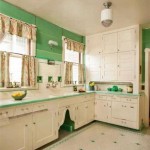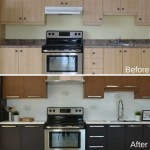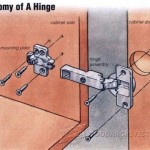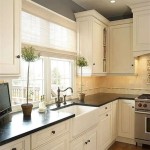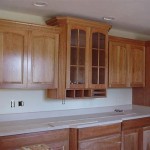How to Install Cabinets on Tile
Installing cabinets directly onto tile presents unique challenges. A successful installation requires careful planning and precise execution to ensure stability and a professional finish. This guide outlines the necessary steps for securely affixing cabinets to a tiled wall.
Planning and Preparation: Accurate measurements are paramount. Carefully measure the wall area designated for the cabinets, noting any obstructions like electrical outlets or plumbing fixtures. Transfer these measurements to a scaled drawing to aid in visualizing the layout and identifying potential issues before installation begins. Verify that the tiled surface is clean, level, and free of dust and debris. Any loose tiles should be re-adhered prior to cabinet installation.
Choosing the Right Fasteners: Selecting appropriate fasteners is crucial for a secure installation. While traditional wood screws may be unsuitable for direct application into tile, several robust options exist. Toggle bolts are a popular choice, offering a strong hold in hollow walls. Anchor screws provide a secure grip in solid substrates. Construction adhesive can supplement mechanical fasteners, offering additional bonding power and stability, especially for heavier cabinets.
Marking and Pre-Drilling: With the cabinet positioned against the tiled wall, carefully mark the desired mounting locations. Use a level to ensure accurate placement and prevent crooked cabinets. After marking, pre-drill pilot holes through the tile using a carbide-tipped drill bit specifically designed for tile and ceramic materials. The diameter of the pilot hole should be slightly smaller than the diameter of the chosen fastener, allowing for a snug fit without cracking the tile.
Cabinet Mounting: Start with the corner cabinet, ensuring it's plumb and level. If using toggle bolts, insert the toggle through the drilled hole and tighten until snug. For anchor screws, drive the anchor into the pre-drilled hole and then secure the cabinet with the screw. If using construction adhesive, apply a bead of adhesive to the back of the cabinet before positioning it against the wall. Continue installing the remaining cabinets, ensuring proper alignment and spacing between units.
Shimming for Leveling: Minor imperfections in the tile surface can lead to uneven cabinet installation. Shims, thin tapered pieces of wood or plastic, can be used to compensate for these irregularities. Insert shims behind the cabinet where necessary to achieve a perfectly level surface. Trim any excess shim material protruding beyond the cabinet frame using a utility knife or flush-cut saw.
Securing Adjacent Cabinets: Once individual cabinets are mounted and leveled, they should be secured to each other for added stability. Cabinet clamps can be used to hold adjacent cabinets together while pilot holes are drilled through the cabinet sides. Use screws specifically designed for joining cabinets to ensure a strong and durable connection. This step prevents cabinets from shifting or separating over time.
Sealing and Finishing: After the cabinets are securely installed, apply a bead of silicone caulk along the top edge where the cabinets meet the tiled wall. This creates a watertight seal, preventing moisture from seeping behind the cabinets and damaging the wall. The caulk also provides a finished, professional look, concealing any gaps between the cabinet and the tile.
Considerations for Heavy Cabinets: Heavier cabinets require additional support. Reinforcing the wall behind the tile with plywood backing prior to tiling can provide a more secure anchoring point. Consulting a professional contractor is recommended for particularly heavy or complex installations to ensure proper support and prevent structural damage.
Working with Uneven Tile: Significant unevenness in the tile surface presents additional challenges. In such cases, consider using a ledger board. A ledger board is a horizontal piece of wood securely attached to the wall studs, providing a level surface for mounting the cabinets. This method bypasses the uneven tile surface entirely, ensuring a stable and level installation.
Specialized Tools and Materials: While many common tools can be used, some specialized tools may be beneficial. A tile drill bit is essential for clean, accurate holes in tile. A high-quality level, preferably a laser level, ensures precise cabinet alignment. Cabinet jacks can assist in lifting and supporting heavy cabinets during installation. Having the right tools can significantly simplify the process and improve the overall outcome.
Safety Precautions: Always prioritize safety during any installation project. Wear appropriate safety glasses to protect your eyes from dust and debris. Use a dust mask to prevent inhalation of tile dust. Exercise caution when working with power tools, and ensure the work area is well-ventilated. Following these safety guidelines can help minimize the risk of accidents and injuries.

Installing A Bathroom Cabinet Quick And Easy Advice

Beginners Guide To Tiling A Kitchen Cabinet Toe Kick

How To Install Tile Backsplash Fixthisbuildthat

Should You Install Tile Under Cabinets

How To Install Floating Kitchen Shelves Over A Tile Backsplash

How To Install Floor Tile Around A Kitchen Island With Wood Look Plank
.jpg?strip=all)
Should You Install Tile Under Cabinets

How To Install Kitchen Tile Backsplash Shades Of Blue Interiors

Tutorial How To Install A Bathroom Vanity The Diy Playbook

How To Install A Kitchen Backsplash The Best And Easiest Tutorial
Related Posts


